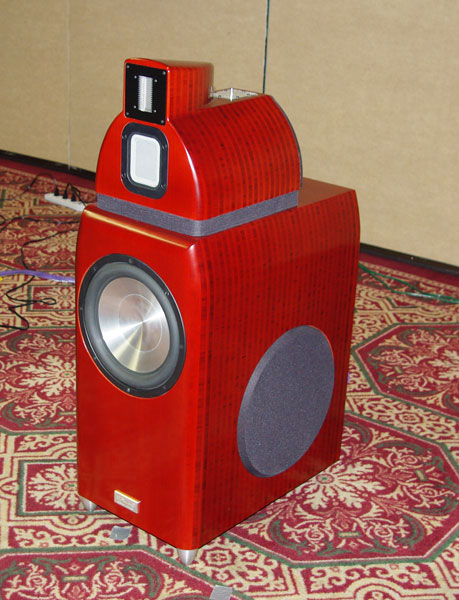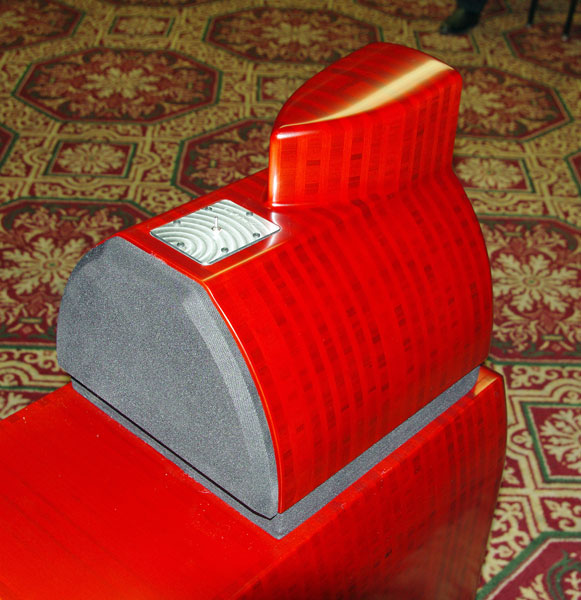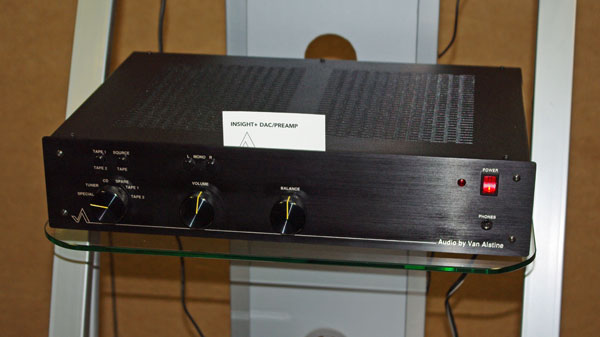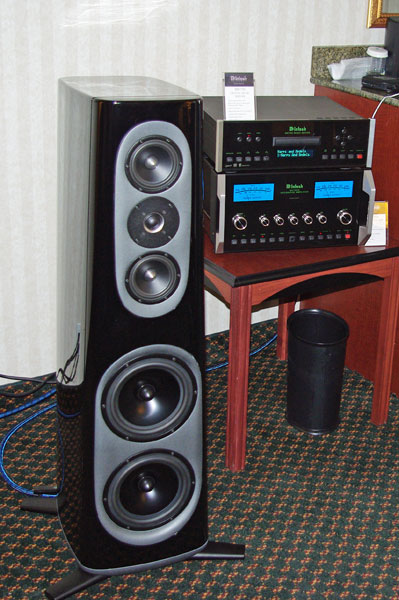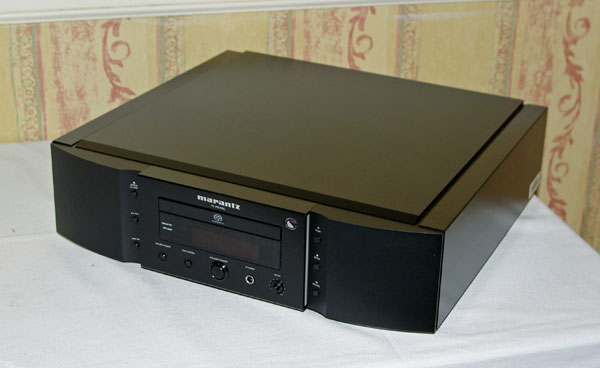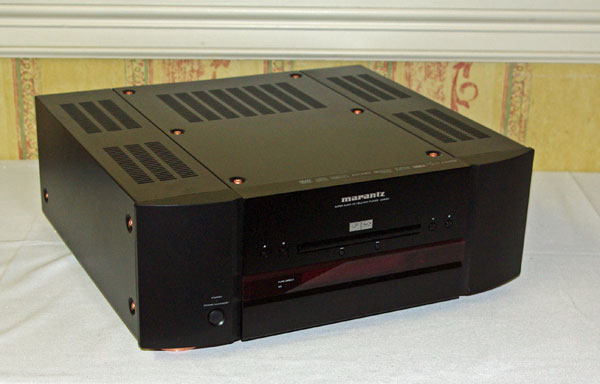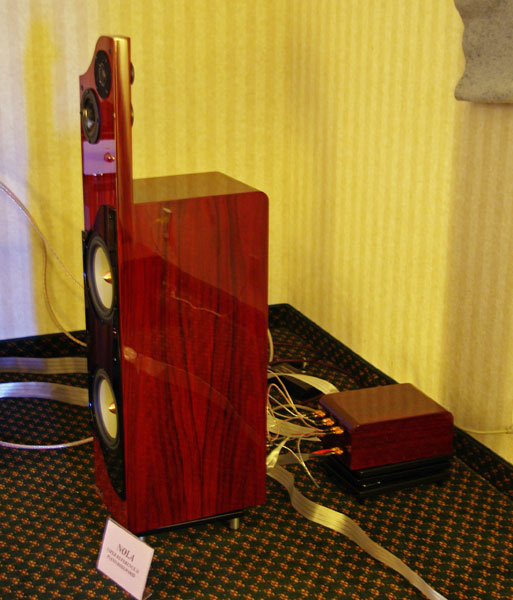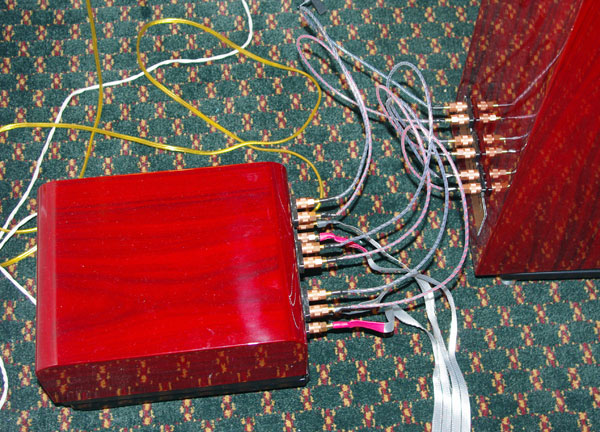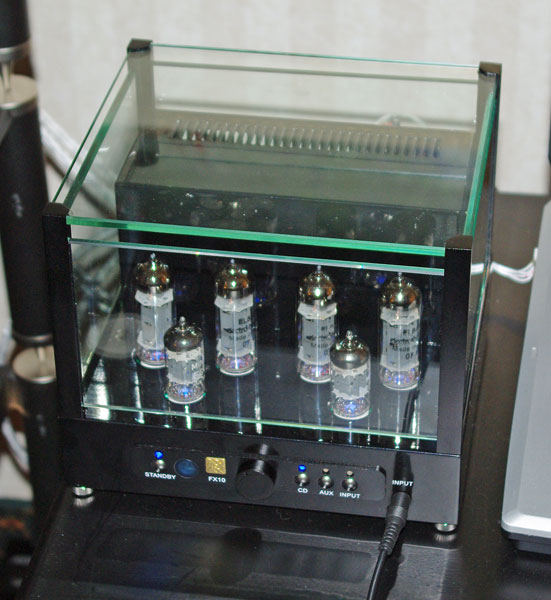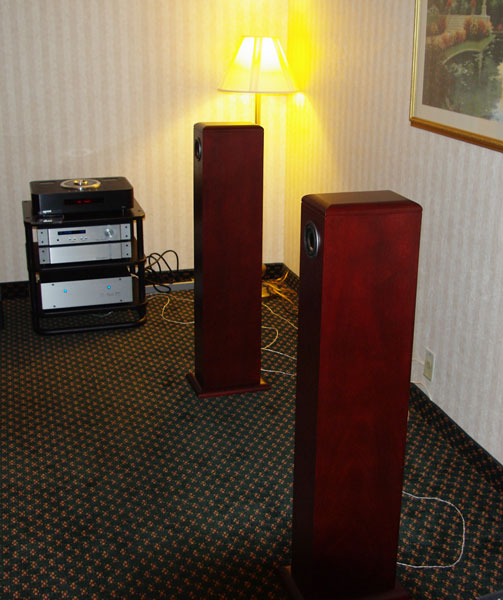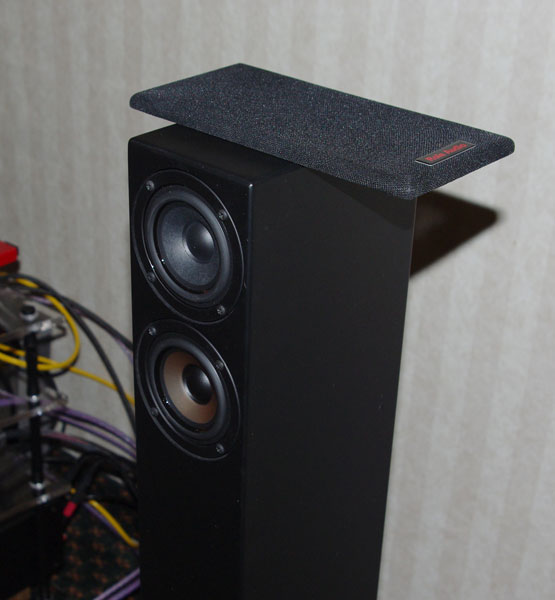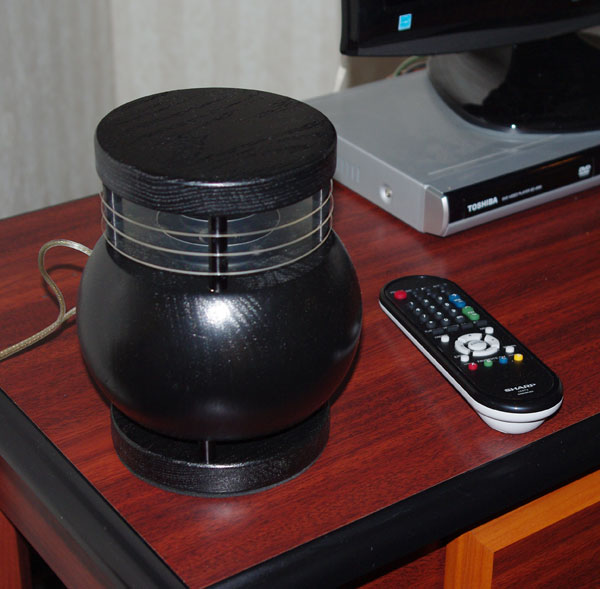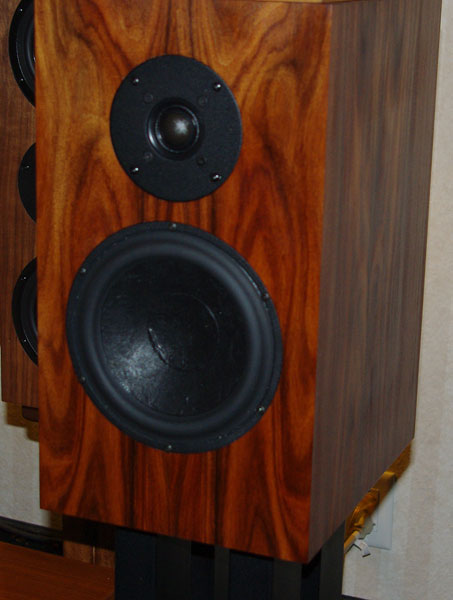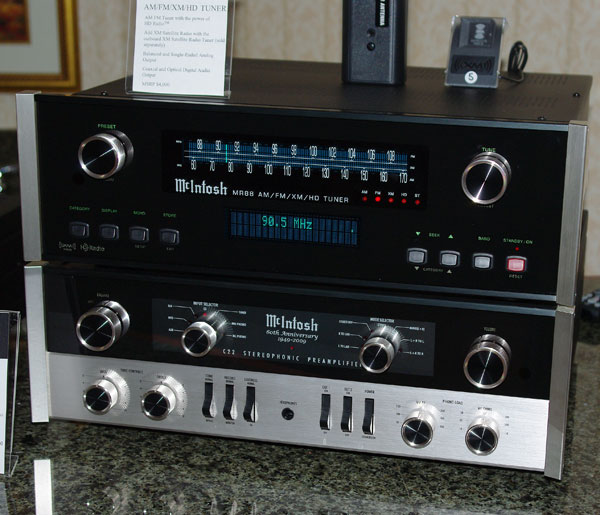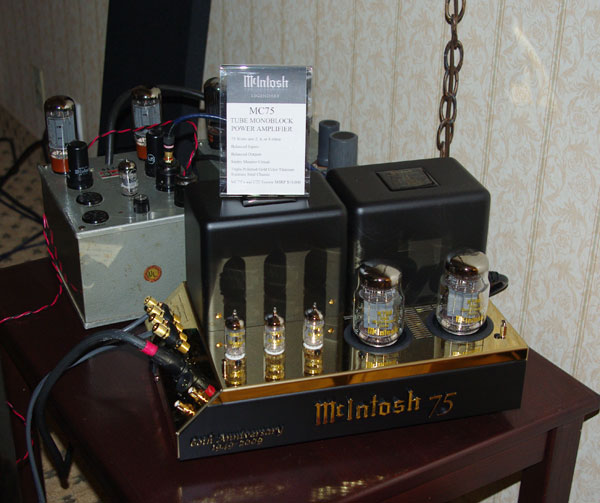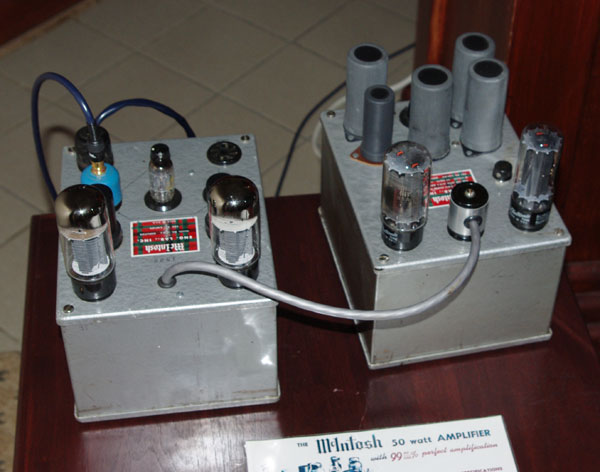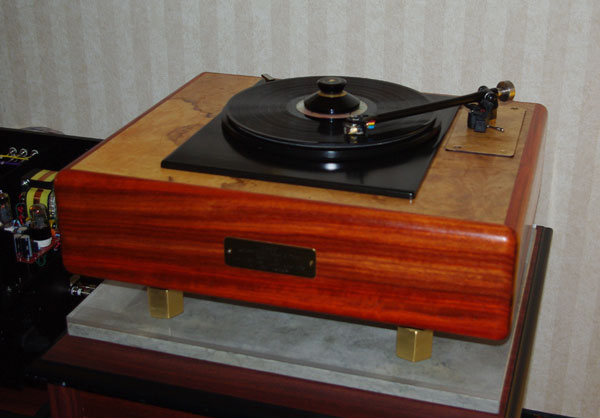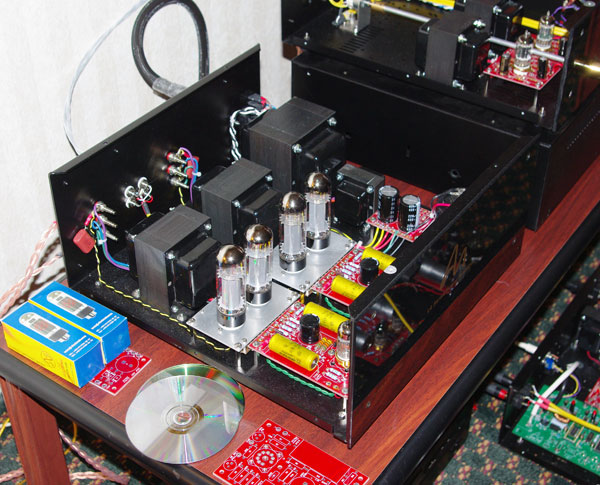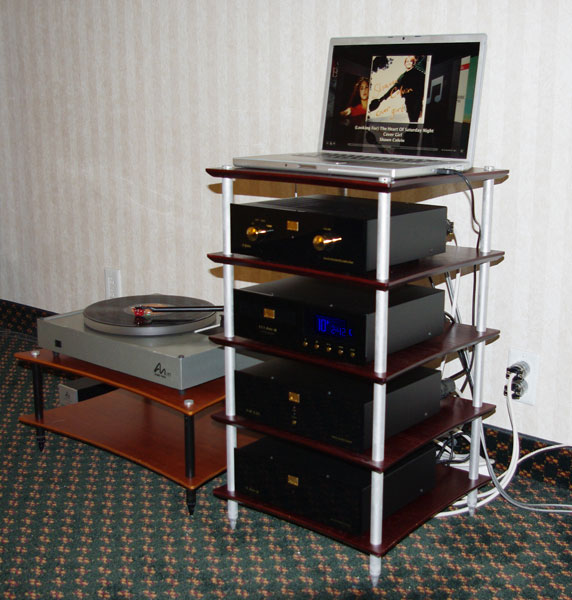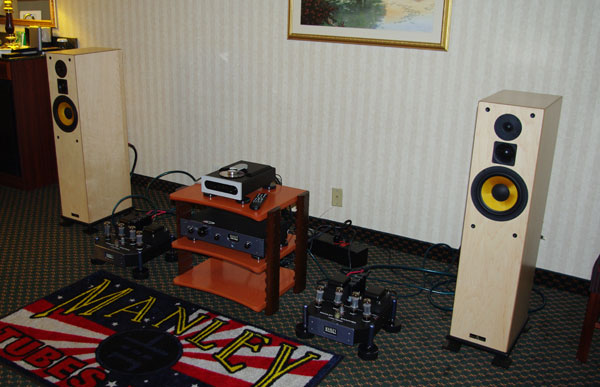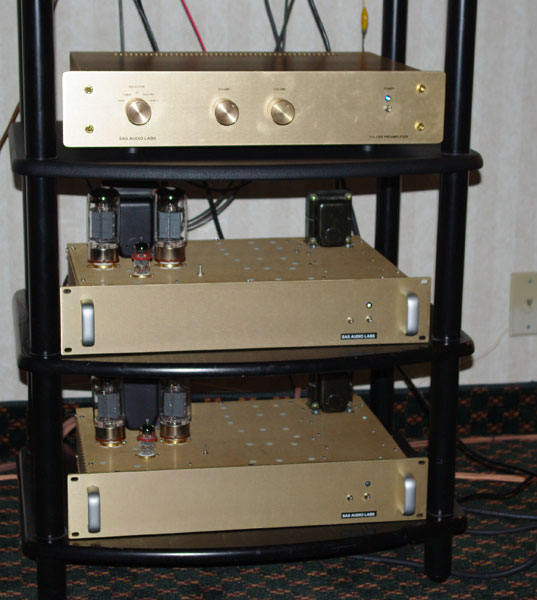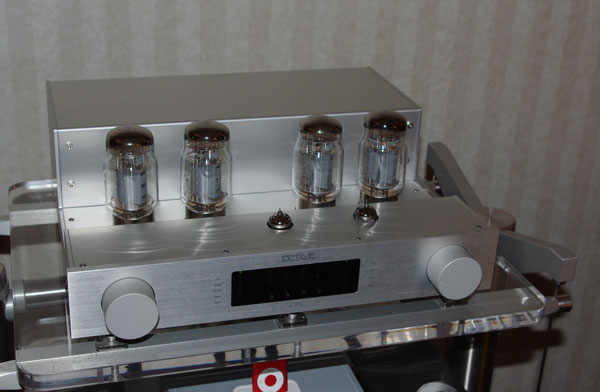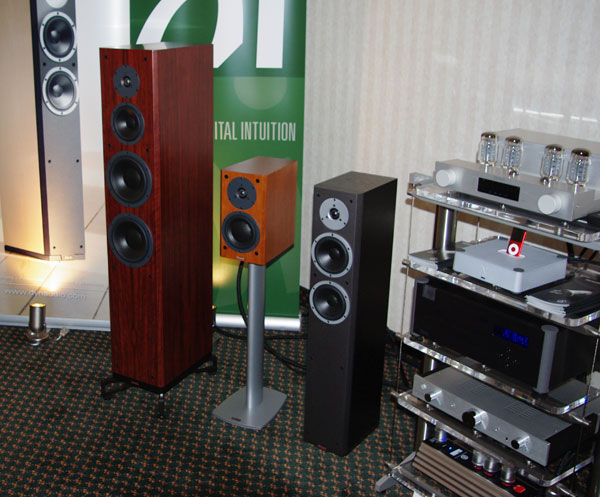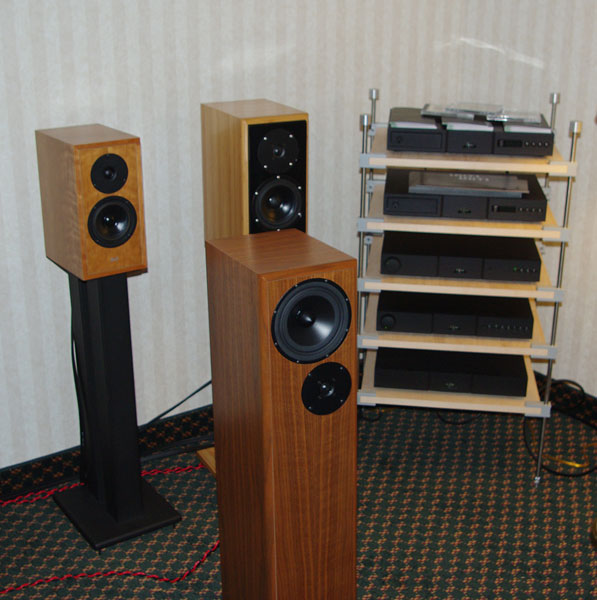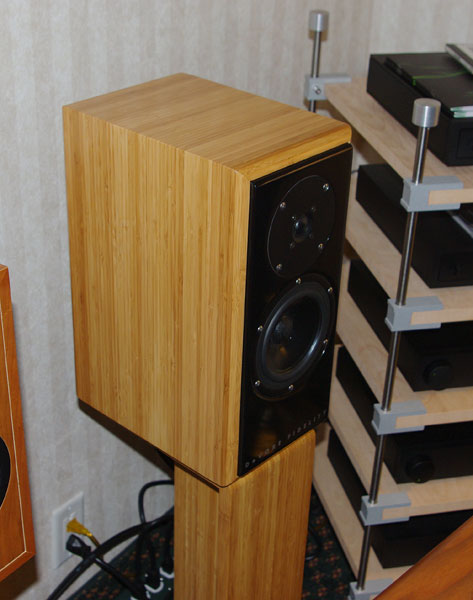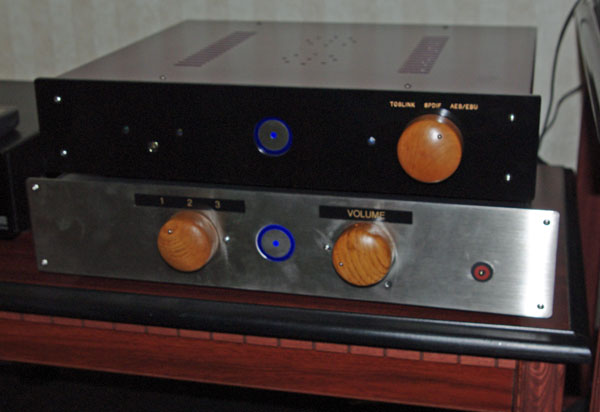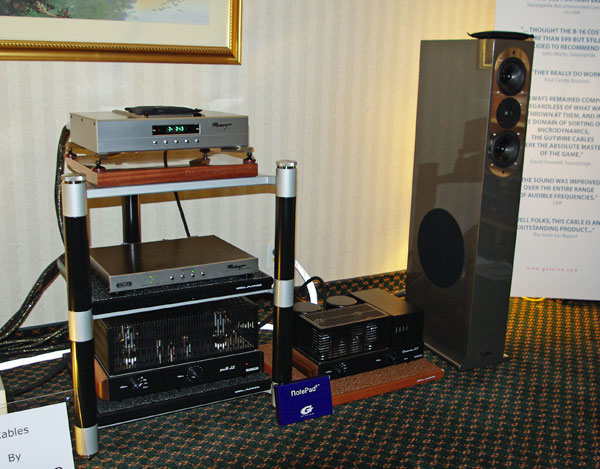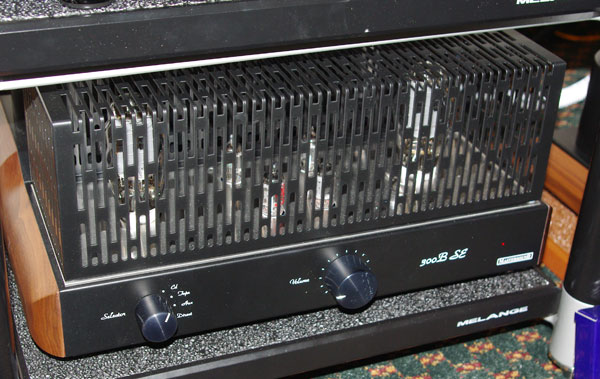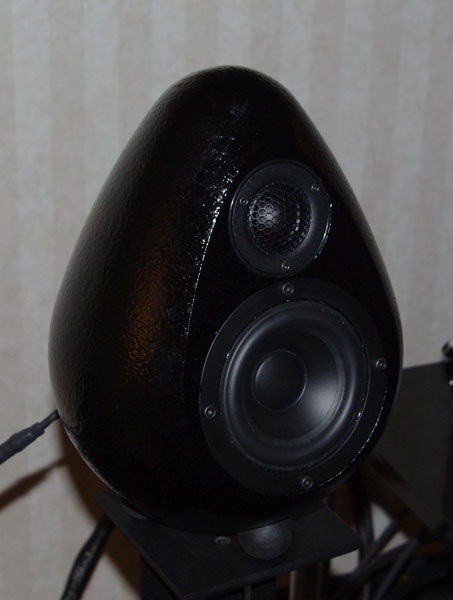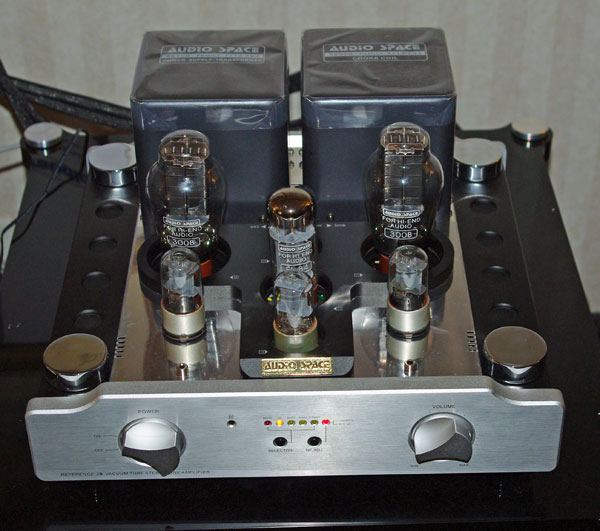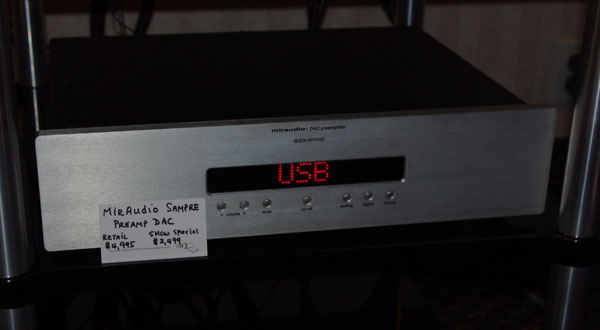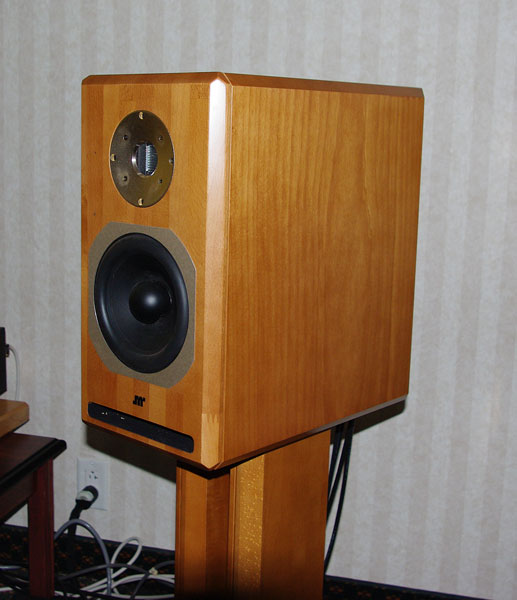|
You are reading the older HTML site Positive Feedback ISSUE 43may/june 2009
Audio Karma's AKFest 2009
It turns out that Audio Karma's AKFest 2009, held in Livonia, Michigan, is a little farther from St. Louis than I had expected—about 630 miles or ten hours in the car. It also turns out that it was worth every minute of the trip. This was my first trip to AKFest and I enjoyed it thoroughly. The show is big enough to justify traveling across the featureless American Mid-west to attend, yet small enough to actually get through in a single weekend. By late Sunday morning I had been to every room and found myself with enough time to go back and annoy a number of the exhibitors further. To their credit, everyone—exhibitors, AK members, and paying customers—were all gracious to a fault. It was a pleasure to be there from beginning to end. I will probably use some variation of the term "impressive" a lot in the course of this report. The sound in most of the listening rooms was surprisingly good given the room limitations and ambient noise. While it is hard to discuss how good the sound was with any sort of absolute certainly, it is easy to relate how "impressed" I was by any given room. Bear with me on this as I am doing the best I can. I also need to beg your indulgence regarding the photos. A lot of audio equipment is black, silver, or black and silver, none of which my digital camera seems inclined to reproduce well. With some equipment, I just could not get a good photo no matter what I tried. Without wasting further time, let me tell you about the equipment that I found impressive, interesting, good sounding, comfortable, and even musical over the weekend of May 2 and 3, 2009. Mostly Big Speakers Audio by Van Alstine and Salk Sound shared the Ambassador Ballroom. Here, Jim Salk introduced his new top-of-the-line speaker the HT-4, an upgrade from his earlier HT-3.
Housed in a beautiful red bamboo-wood cabinet, the HT-4 is flat to 18Hz. To accomplish this Salk uses a single 12 inch woofer and dual passive radiators. Attempting to manufacture this speaker with a conventional port would be impossible due to the size of the port required. The most interesting technical aspect of the speaker is the use of a "tunnel" for the midrange driver. According to Jim, when a midrange driver operates as a dipole, with its back unenclosed, cancellation effects occur that result in voices being "seven feet wide" in between the speakers. The tunnel keeps this from happening while still letting sound radiate from the back of the driver providing more air and openness to the soundstage. The tunnel itself is lined with foam. The amount of foam can be varied or the tunnel can even be sealed to adjust the speaker for a given room.
The tweeter sits in a beautiful aerodynamically-shaped wood fairing. The prototype speaker had three setting for the tweeter's output—flat and plus or minus 1.5dB. Production models will offer settings for flat, minus 1.5dB, and minus 3dB. I listened to this speaker with Frank Van Alstine. We stood in the middle of the very large ballroom while Bach's Toccata and Fugue played at realistic levels. Frank commented that it was the first speaker that he had heard that could realistically recreate the sound of a live orchestra. I had to agree. It was very impressive. The new Salk HT-4 is projected to sell for just under $15,000 in mdf and around $19,000 in bamboo.
The HT-4 was powered by Audio by Van Alstine's Ultra 550 Hybrid amplifiers bridged to produce 1000 watts per channel. The sound was truly outstanding.
At the other end of the room, Salk showed his new H2TL transmission line speaker ($4000 per pair). This was also powered by Van Alstine electronics. Frank was showing his new Insight DAC/preamp ($999). Power was supplied by an Insight 440 solid state stereo amplifier ($1699). Again, the sound was very good. www.salksound.com www.avahifi.com In the high-end Snell room hosted by Bob Graffy, Snell showed a prototype of their new Phantom tower loudspeaker. This is a smaller and less expensive version of their $50,000 Illusion loudspeaker.
Smaller being the relative term that it is, the Phantom is still a very large and impressive speaker. Designed by Joe D'Appolito, it is beautifully made and sounded very good in a room that was clearly smaller than it would have liked. The Phantom features no parallel surfaces and uses materials and designs developed for the Illusion. It will sell for $20,000 and be out in August. Snell chose AKFest to debut this new speaker and from the amount of traffic I saw through their room, it was appreciated by all those who attended the show. The Phantom speakers were driven by McIntosh components. In their second room, the new Snell LCR7XL speakers sounded very good driven by Marantz Reference Series equipment. The SACD player was the SA-7S1, the preamp the SC-7S2, and the power amps were MA-9S2s. I got to meet Joe D'Appolito who was hosting the second room. It was a real honor and pleasure to actually get to meet him. Every one of us who has tried building his own speakers has probably benefited in some way from the work he has done. Marantz also had a very impressive home theater set up in the Diplomat Ballroom. Again, Snell speakers and Marantz components were used in a 7.1 surround sound configuration. What I found interesting is that many of the Snell speakers are offered as free-standing, in-cabinet, or in-wall models. The sound of each speaker is identical so they can be interchanged within a room for whatever configuration works best. Unfortunately, I did not get to experience any movies in the Marantz room but did have a chance to talk with Kevin Zaron about a couple of very interesting new two-channel components. Ken Ishiwata is very well known in Europe. He really is the face of Marantz on the continent and Ishiwata-modified Marantz components have long been available there. Regrettably, they have never been sold in the United States. Until now.
Marantz showed a prototype SA-KI SACD player. A limited edition of 500 players is being produced in honor of Ken's thirty years with Marantz. The SA-KI will retail for $3000 and offer performance between the SA-15S1 and SA-11S2. It will also be the first Reference Series component to be offered in black, actually a color referred to as "Pearl." A matching integrated amplifier will be offered in the fall. I pitched the idea of reviewing the SA-KI with Kevin for PFO. We'll see what happens.
I should also add that Marantz will be offering a universal Blu-ray player in July, the UD-9004. It will play back BD, SACD, DVD, and CD discs and be based on the SA-7S1. No price has been announced. I don't expect that it will be inexpensive. www.us.marantz.com www.snellacoustics.com
Nola and Jolida shared two rooms at AKFest. In the higher-end room, Carl Marchisotto and his charming wife, Marilyn, welcomed listeners to hear the Nola Viper Reference II driven by Jolida's new 1000P 100WPC tube power amplifier ($2000). The Viper Reference II is an absolutely gorgeous speaker. It uses alnico magnets in the custom tweeter and midrange drivers; the woofer is sourced from SEAS. The external crossover boxes, featuring Mundorf silver/gold capacitors, are just as nicely finished as the speaker cabinets. The sound was very good. For its $15,000 price the VR II includes Nordost cables so that the buyer will get the same sound at home as he hears in the showroom.
The second Jolida/Nola room was another place that was constantly busy over the weekend. The Jolida Glass FX-10 remote-controlled integrated amp (10 WPC using a quad of EL-84s and costing $450) sounded very good driving a pair of Nola "Boxer" prototype speakers (expect them to cost around $1500). The two-way Boxers offer 96dB sensitivity and are very nicely finished. The sound was very good and what made this combination even more remarkable was that a prototype Jolida DAC was feeding the FX-10 amp. The DAC is projected to sell for just $99. That's right $99. The DAC will be just large enough to accommodate a pair of RCA output jacks. I was very impressed by piano music played through this system. It wasn't just good sound for the money, it was excellent sound period.
Jolida will be offering a tuner, transport ($199), phono stage, and tubed DAC ($250) as part of the Glass FX series components, which will be offered in silver, black, and blue finishes. www.nolaspeakers.com www.jolida.com The other large speakers that sounded very impressive were the Bamberg Series 5 TMWs from Bamberg Audio of Sandwich, Illinois. These speakers are beautifully finished and the sound was excellent in their listening room. They were powered by a Modwright preamp and KWA 150 stereo amplifier. Priced at $8275, the Bambergs appeared to be an excellent value. Bamberg also makes some smaller speakers and I spoke with them about reviewing a pair. www.bambergaudio.com
Mostly Little Speakers The Acoustic Technologies "Classic" uses a single 3-inch titanium coned driver to produce frequencies from the low 40Hz range to the high 30kHz range. The Classic features a ported cabinet little wider than the driver itself. The sound was astonishingly good and it was hard for most visitors to believe that this small driver was actually producing all the sound they were hearing. The Classic uses no crossover, features .9999% pure silver wiring, and is over 92dB sensitive. The price is $2400 per pair with solid mahogany top and plinth, slightly less in all black. The sound of these speakers was very open and essentially the same at any place within the room. These speakers can really disappear. www.acoustictechnologiesllc.com
The Primeonemedia room was demonstrating the RTM Smooth "Egg" loudspeaker. The egg-shaped cabinet is made from cast iron and each one weighs about 20 pounds. No question it was the deadest and most solid cabinet at the show. The drivers include a very high end Scanspeak Illuminator tweeter with a 4-inch mid/bass unit. The RTM created enough bass to sound believably full range and quite good. Retail for a pair of Eggs is $2000. [email protected] Audio Two demonstrated Role Audio's Sampan DTL speakers in their room. These speakers feature dual 3.5-inch drivers and claim a frequency response of 35-20,000Hz. They sell for $2500 per pair. The source component for their system was the new Cyrus 8SE CD player feeding a Magnum Dynalab receiver—a 120 watt hybrid. Liquid Cables connected everything together. www.roleaudio.com
R.D.D.C. showed their Omni-Pod line of two-way and one-way omni-directional speakers intended primarily for home theater use but also usable in a two channel set up. The 6-inch diameter spherical body of each speaker is made from wood and any type of wood is potentially available. The speakers are hand-made and have a frequency response of approximately 100-20,000Hz. The assumption is that they will be used with a powered sub. A set of four speakers, two two-ways and two one-ways, is only $280. www.rddcspeakers.com
Fritz Heiler Loudspeaker Systems offered some of the most cost-effective speakers I have seen. By that I mean that the quality of the parts going into the speakers is far higher than would be expected at the price. Their top of the line monitor, the Carbon 7, uses all Scanspeak drivers and features a series crossover. With all that it retails for only $1650 per pair. www.fritzspeakers.com
Things That Struck Me As Particularly Interesting McIntosh showed their new XR200 speaker at AKFest ($16,000 per pair). It is a smaller version of the XRT1K. The XR200s have "only" 12 midrange drivers, 7 tweeters, and 3 eight-inch woofers. While certainly not small, the XR200s are far more likely to fit the typical domestic listening room than the XRT1Ks. What made listening to the XR200s extremely interesting is that they were driven by a pair of 60 year old McIntosh mono amps. McIntosh rebuilt a pair of 50W2 amplifiers from 1949 and used them to run the XR200s. The sound was wonderful. Most people who heard the system assumed that the speakers were being run by the MC75 amplifiers sitting nearby. The 50W2s were quiet, dynamic, and very musical. For me, this was probably the coolest thing that I saw at the show.
The McIntosh room also had 60th anniversary versions of their C22 tube preamplifier, MC75 amplifiers, and MR88 tuner. The MR88 tuner is $4000. The C22 is only sold with a pair of MC75s; the three retail for $15,000. For that money you also get a copy of the McIntosh book by Ken Kessler. www.mcintoshlabs.com
Audio Note Kits was using their new L-4 EL-34 stereo amplifier, 35 Watts of AB1 power in Pentode mode and costing $2100, to drive a pair of AN/E speakers. Also in use were the L3 phono stage, L3 transformer coupled line stage preamplifier, and 2.1B DAC. The vinyl front end was a restored Lenco turntable in a custom base. The turntable weighs around 60 pounds. It was gorgeous to both look at and listen to. www.audionotekits.com
In the Audio Note non-kit room, they were showing their new Zero Series equipment made for them in Lithuania. The demo system consisted of the iZero integrated amplifier (9 WPC), CDT Zero/Mk II CD transport, DAC 0.1X, and R Zero II phono stage. Speakers were the E-SPE HEs. These use silver internal wiring, hemp cones, and offer 98dB efficiency. The vinyl front end was an Audio Note TT Two turntable—2 motors and three point suspended sub chassis—an AN Arm 3 (a modified Rega), an IOI cartridge and an AN-S4 step-up transformer. www.audionote.co.uk www.triodeandco.us The new Emerald Physics CS-3 speaker sounded remarkable driven by Wired 4 Sound electronics. With an efficiency of 95dB and a frequency response of 32-22,000Hz, the CS-3 should be drivable by any type of amplifier the owner wishes to use. At $2995 a Behringer DCX2496 electronic crossover is part of the package. For an additional $400, a DBX crossover with room correction is also available.
Emerald Physics has also announced the CS-2.3, an upgrade of the original CS-2. It is even more efficient at 100dB and goes slightly deeper than the CS-3 with a frequency response of 20-22,000Hz. The same crossover options are available as for the CS-3. Base price is $3995. Wood adds $300, the DBX crossover $400. www.underwoodhifi.com
Manley showed their new Jumbo Shrimp tube preamp. The $2300 Jumbo Shrimp has a larger power supply than the original Shrimp as well as a radio-frequency remote. The Jumbo drove a pair of Snapper monoblock amplifiers ($4250 per pair), which in turn drove a pair of Gershman Acoustic Sonogram speakers ($3700 per pair). The source was a Bel Canto CD-2 player. This was yet another very good sounding room. www.manleylabs.com Dealer Audio Dimensions had the new Audio Research VSi60 integrated amplifier and upgraded CD-8 player in use. The CD-8 is now using 6550 driver tubes instead of the original 6H30s. The VSi60 has foregone the classic ARC knobs. All the switches appear to be pressure-sensitive buttons.
Ty Lashbrook of Tyler Acoustics brought his new, extremely large Decade D10 loudspeakers. These are an upscale version of his D1 speaker replacing their 7-inch woofers with 10-inch drivers. The sound was very good and very coherent powered by McIntosh electronics. I did not get to hear the new D4 monitor speaker but it is beautifully made and sells for only $1950 including shipping. www.tyleracoustics.com
SAS Audio Labs is a manufacturer that was new to me. They showed their 11A preamplifier ($2849) and new 6550-based monoblock amplifiers ($3995 per pair). The amplifiers are rated at 25WPC, use polypropylene capacitors, and sounded quite good. I listened to some Dave Brubeck through their system and found it very enjoyable. SAS also makes a 10A phone preamp that sells for $2849. I discussed reviewing their equipment and hope that it works out to do so. www.sasaudiolabs.com
There were two Dynaudio rooms. The less expensive of the two featured Dynaudio Focus 360 speakers ($6500 per pair). A Wadia CD player was the source and the new V70 integrated amplifier from Octave provided the power ($6600). Argentum cables connected things together.
The higher end Dynaudio room featured substantially more expensive models of the same or similar equipment. I felt intimidated and didn't want to look like the sort of person who would actually have to ask what it cost. www.dynaudiousa.com One of the really enjoyable rooms that I spent time in was the Devore Fidelity/Naim room. I have not heard any of these components, other than very briefly, prior to this show.
I sat there for a while listening and found myself thinking "this system sounds extremely good." The speakers were the Devore Fidelity Gibbon Super 8s ($4500 per pair) and I assumed that the amp was the Supernait. It turned out that the CD player in use was the CD5i powered by the Nait 5i—the least expensive components in the room. I have to admit that I was extremely impressed. I asked to hear what an upgrade system would sound like and got to hear the Nait XS and CD5X. The improvement was subtle but I though there was a slight enhancement in overall definition with the more expensive equipment. The thing is, there was absolutely nothing to complain about with the most basic set up. It sounded wonderful.
Devore Fidelity was also showing an all-bamboo speaker. Their Gibbon 3XL ($4300) features both cabinet and stands made of bamboo. The speakers looked beautiful. I can now honestly say that I have a far better understand what the fuss is all about when people talk about how musical Naim equipment is. www.asigroup.com www.devorefidellity.com
Blue Circle Audio of Canada was showing their new Katlas 145 WPC integrated amplifier. This is an all solid-stage unit featuring stepped attenuator volume controls. www.bluecircle.com
Also from the North were the people and products from Gutwire Audio Cables, Ltd. They were showing a new line of SP Series AC power cables. These cable use a variety of natural materials—exotic carbons, crystals, and other minerals—to thwart RFI, EMI, and related cable ills. The SP series ranges from $799-4199 US. Gutwire had the Notepad²™ on special at the show. The Notepad²™ is a "New generation of enhanced durability vibration dampening pillow." These pads feature three layers of materials—Polyethylene, aluminum, and cloth as I understood it. These layers are designed to stop unwanted resonances in an audio system. Gutwire recommends using them on top of transformers, transports, and between cables where they have to cross over each other. I got four Notepad2s at the show special price of $25 each, and will report on how they behave in my own system.
Electronics in the Gutwire room included an Italian Mastersound 300B, 12 WPC integrated amplifier ($6000), Japanese Remiyo transport and DAC, and German ASW speakers ($5300 per pair). The speakers are rated at 4 Ohms and 92dB efficiency. The bass performance of this system was very impressive as was the overall sound. www.gutwire.com
I noted above the "Egg" speakers in the Primeonemedia room. Primeonemedia also showed some other very interesting components.
An Audio Space Reference 2S preamp was in use in the room. This preamp uses a pair of 300B tubes driven by an EL-34. It is beautifully made and includes a remote control. Since all of the equipment in the room was unfamiliar, I can't comment on how the 2S sounded by itself but the sound was very good in the context of the system in use.
MIRAudio showed several components that also interested me. First was their Sempre preamp/DAC. This unit features five analog and five digital inputs with remote control of input and volume. Part of the appeal this unit had for me was the large, red, easy-to-read digital display with volume readout. The MIR Sempre fed either their Juno integrated amplifier, 10WPC of SET output, or the Dayo integrated with 20WPC of push/pull output. Both amps sounded very good. Zentara interconnect, speaker, and AC cables connected everything together. www.zentaracables.com www.primemediaone.com A number of Audio Karma members set up their own demonstration rooms. These rooms offered both some very unique equipment and perspectives on the audio world. I listened to a number of systems that featured 1970s solid state equipment—equipment largely disdained by audiophiles then and now. This may be a mistake as connected to modern speaker with modern cabling much of this equipment sounds extremely good.
One room that particularly got my attention was displaying the "Indignia" two way speakers. The Indignia can be built for $104 a pair, excluding cabinets. It uses parts from Parts Express and sounded remarkably good. Information on it can be found at the Audio Karma web site. www.audiokarma.org Sunday Afternoon As I mentioned at the beginning of this article, AKFest is small enough that I was able to take it all in with some time left on Sunday to return to rooms that particularly appealed to me. One of these was manned by PFO's own Bob Neill. Poor guy, he had no idea I was going to show up not once but twice.
Bob was demonstrating several JM Reynaud speakers. The $6900 per pair Offrandes speakers were in use while I was there and I found their sound very appealing. These speakers have a tonal balance that is somewhat warm while still offering very good detail and excellent imaging. Bob was using Audio Note equipment for his front end and a Blue Circle hybrid integrated amplifier for power. I hung around for an hour or so and got to hear a lot of different music provided both by Bob and the various listeners who came through his room. I would characterize the sound overall as being very musically comfortable. The company was even better. www.amherstaudio.com And In Conclusion And there you have it—AKFest 2009—two days of shameless self-indulgence. Two days spent eating, sleeping, listening, and talking nothing but audio. Thanks again to everyone at Audio Karma, especially Nancy and Dave Goldstein, for doing all the hard work that makes AKFest possible. I certainly appreciate having had the chance to spend a weekend in Livonia. I'm already looking forward to doing it again.
|

